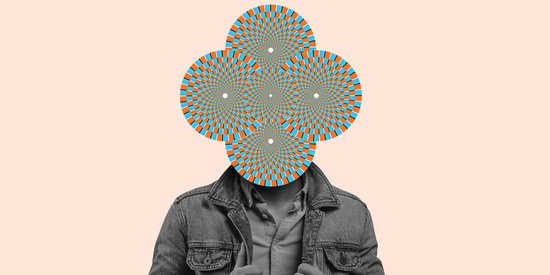The personality of each person is determined by a type defined from 5 elements. The personality determined in this way, is also sometimes known as the "Enneatype".
The 9 personalities and their characteristics
The 5 elements are:
The preferred center and its direction of use, expresses the inappropriate way in which we give preference to one of our functions, be this instinctive, emotional or mental.
The orientation represents what the person seeks to bring to the world, regardless of his level of development, ego or essence
The compulsion is the automatic mechanism of avoidance, which is at the base of the construction of the ego.
The passion is the main emotion experienced by a person when he is in his ego, under the influence of his compulsion.
The virtue is the main emotion experienced by a person when he masters his compulsion and is in his essence.
The 5 elements determine the personality:
There are 9 principal personalities. These are:
Type 1 is called The Perfectionist or The Reformer:
The Perfectionist is organized, voluntary and determined. He evaluates everything, especially himself and his own accomplishments, according to the standards of perfection that he sets for himself. He is torn by a drive of “ it has to be done” and “I must” that push him to work very hard and to constantly improve. Thanks to him, different projects are always carried out.
Type 2 is called The Helper:
The Helper is exceptionally sensitive to the feelings and needs of others. He focuses his attention on working out their desires and wanting to fulfill them, believing to deserve a place in their life in doing thiis. Very attentive, he has the gift of establishing a climate of trust, that invites others to open their hearts and to confide in him.
Type 3 is called The Achiever:
The Achiever is very dynamic, efficient and generally succeeds in everything that he sets out to do. A great optimist, he has a knack for creating enthusiasm in other people. Always wanting to look his best, he will only reveal the pleasant and supportive aspect of himself and of what he does.
Type 4 is called The Individualist:
The Individualist is a sensitive and inspired being. He is able to harness a hidden beauty which has not yet been revealed and materialize it through a project, whether it is a work of art or a different way of reacting, to teach, to educate or via any other creative human activity.
Type 5 is called The Investigator
The Investigator is objective, balanced and likes to question reality. Despite appearances, he is often a free-thinker, original, surprising by his non-conformity. Very attracted to knowledge, he wants to understand everything. He loves to dig and dissect systems, which are sometimes very complex.
Type 6 is called the Loyalist:
The Loyalist is extremely sensitive to detecting risks in a timely manner, even unsuspected by others, of a new project. This type has a sixth sense for anything inconsistent or threatening to his safety. One of his most beautiful characteristics is devotion, that fervent and loyal attachment to someone or to a principle, a quality which is rare in our individualistic world.
Type 7 is called The Enthusiast
The Enthusiast is extraordinarily quick-thinking and imaginative. His mind is hyperactive and he loves to imagine projects. His enthusiasm is contagious. He loves to have fun, make people laugh, relax the atmosphere. A born communicator, he helps others see and enjoy life.
Type 8 is called The Challenger:
The Challenger is very strong willed, dynamic and active. He is a natural decision maker, who loves to exert his influence on the environment and take on heavy responsibilities. Seemingly strong and solid, he is someone who can be counted on, especially in crisis situations or when immediate intervention is required.
Type 9 is called The Peacemaker:
A great pacifier, the Peacemaker is very adept at grasping the different points of view of each individual. It's no coincidence that this type is at the high point of the diagram, because he's able to take on, in a way, the view of the other eight types. Non-judgmental, he knows the art of listening without judging. He could well be the one who uttered the phrase "Live and let live."
We all have our own character, which changes and evolves depending on what we experience. Despite everything, we all have a preferred center. We tend to use it constantly in a certain direction. This double character will create an imbalance, thus characterizing our ego (or false personality). The ego manifests itself primarily through an avoidance mechanism called the compulsion type.
Here's what each of the 9 types seek to avoid at all costs:
The 3 centers
According to the Enneagram, every human being has 3 forms of intelligence:
- the instinctive center:
It ensures our physical and psychological survival in the present. Thus we compare the present to situations experienced in the past which are similar, and consequently choose to act or not, to change or not. It is the center of our vital energy, of our spontaneous acts, of our physical coordination, of our creativity in action.
- the emotional center:
It is concerned with our own wants and needs and those of others. It is concerned with our relationships with others. Like our emotions, it lives deeply in the present.
- the mental center:
It is the place of reasoning, choices, decisions, plans and projects. It reasons by analysis and synthesis from information which is intended to be objective. It is oriented towards the future.
Each of these three operating modes has a specific role and specific objectives
The preferred center: Acting independently, these 3 centers are sometimes in agreement, sometimes in disagreement. According to the Enneagram model, we all tend to prefer one of the three centers, that is to say, that we will use one of the 3 centers in a preferred manner.
In this way, types 8, 9 and 1 prefer the instinctive center; points 2, 3 and 4 prefer the emotional center; profiles 5, 6 and 7 prefer the mental center.
Direction: Each preferred center can be used in three different ways: towards the inside, outwards or by seeking a kind of balance between the inside and the outside.
Each of the profiles of the Enneagram favors one of these three directions of use of its preferred center:
Instinctive center
The 8 uses the instinctive center outwards; he acts to have impact, control, power over the world around him.
The 1 uses the instinctive center inwards; he acts to gain control over himself.
The 9 seeks a balance between the interior and exterior use of the instinctive center; this sometimes paralyzes the use of the center; he then doesn’t act much.
Emotional center
The 2 uses the emotional center outwards; he perceives the emotions of others with great finesse and seeks to help them.
The 4 uses the emotional center inwards; he is attentive to his emotions and values naturalness and authenticity.
The 3 seeks a balance between interior and exterior use of the emotional center; this sometimes paralyzes the use of the center; he then knows little about his real emotions.
Mental center
The 5 uses the mental center outwards; he wants to understand how the world around him works and accumulates information about it.
The 7 uses the mental center inwards; he imagines plans to create a better and more pleasant life.
The 6 seeks a balance between interior and exterior use of the mental center; this sometimes paralyzes the use of the center; he then doubts himself and his decisions.
The practice
To master compulsion is to learn to rebalance these centers. This goes through 5 steps which are: observe, understand, accept, change, transcend.
Working on your communication is done in 4 steps which are: observe, understand, accept, act.
If you are interested in this practice then you can find Enneagram practitioners and trainers all over the world who work in the way that best suits you: through courses, individual consultations, group workshops or in coaching sessions (NLP initiates the Enneagram). You should know that the introductory workshops generally last two days, sometimes three. You can also learn about the Enneagram by consulting the many books on the subject.
With the Enneagram, awakening to who you really are will become possible and you will open up to others without judgment.
Do You Know The 9 Personality Types According To Enneagrams?








